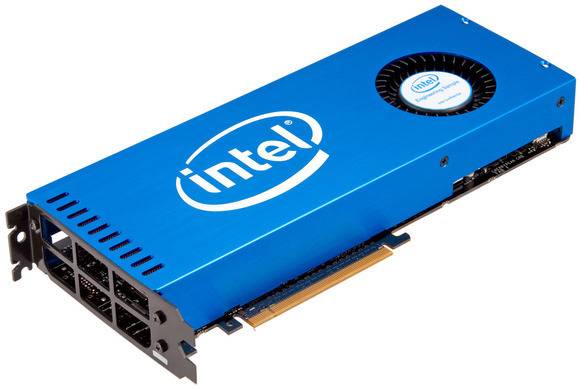After abandoning its own GPU for supercomputers, machine learning, and video games in 2009, Intel has returned to the market with a new 72-core Xeon Phi, to compete with NVIDIA’s growing portfolio of GPUs.
The Xeon Phi ‘Knights Landing’ chip, announced at the International Supercomputing Conference in Frankfurt, Germany last week, is Intel’s most powerful and expensive chip to date and is aimed at machine learning and supercomputers, two areas where Nvidia’s GPUs have flourished.
See also: IoT revenues up 15%; cloud computing a big driver
Inside the chip there is 72-cores running at 1.5GHz, alongside 16GB of integrated stacked memory. The chip supports up to 384GB of DDR4 memory, making it immensely scalable for machine learning programs.
At the conference, Intel mentioned some of the issues with GPUs for complex machine learning programs. It believes that the Xeon Phi, which is a byproduct of the failed GPU in 2009 called Larrabee, is an answer to some of those problems.
Intel has already deployed the new Xeon Phi chip to several supercomputers including the Stampede 2, an 18-petaflop supercomputer that ranks in the top ten worldwide.
While supercomputers are definitely the focus, Intel does see the Xeon Phi chips being utilized by machine learning and artificial intelligence developers. Servers are another area where Intel is looking into, though the $6,294 price tag may put some companies off.
Intel could have an edge over Google
Google has built its own chip, a Tensor Processing Unit (TPU), specifically for machine learning and deep neural networks. While it may be hard for a general chip that doesn’t offer specific functionality to compete with a chip designed for machine learning, some developers may choose Intel, a neutral company, over Google who may be a competitor in the machine learning and AI markets.
Intel has plans to launch an even faster version of the Xeon Phi, clearly showing a commitment to the market that they didn’t have in 2009. Hopefully, if the first Xeon Phi doesn’t succeed, it won’t back away from those plans and give the market entirely to NVIDIA.









